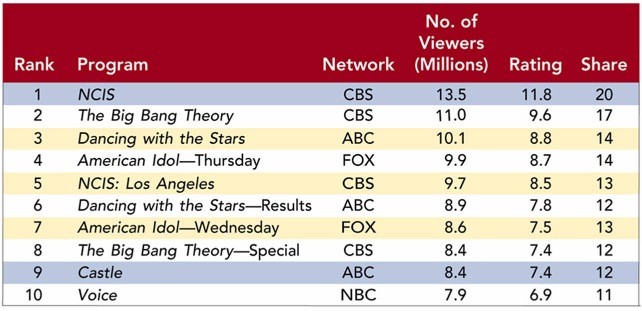 Figure 7-3Figure 7-3 above shows the top ten prime-time broadcast TV shows during a recent May sweeps week. If an advertiser such as Apple wanted to buy time on one of these TV shows, which of the following statements would be most accurate?
Figure 7-3Figure 7-3 above shows the top ten prime-time broadcast TV shows during a recent May sweeps week. If an advertiser such as Apple wanted to buy time on one of these TV shows, which of the following statements would be most accurate?
A. Of all households with TVs in the U.S., fewer households watched American Idol - Wednesday than American Idol - Thursday.
B. The cost of an advertisement shown on American Idol - Thursday would cost more than one aired during Dancing with the Stars - Results.
C. People who like reality TV are more likely to watch ABC than FOX.
D. Apple would advertise on Dancing with the Stars - Results and NOT Dancing with the Stars because the proportion of the TV households actually tuned into the former is greater than the latter.
E. Apple should advertise on NCIS: Los Angeles since the rate CBS would charge is the same as the rate FOX would charge for American Idol.
Answer: B
You might also like to view...
The percent of fixed assets to total assets is an example of
a. vertical analysis b. solvency analysis c. profitability analysis d. horizontal analysis
Answer the following statements true (T) or false (F)
1. Reliability takes into account any downtime associated with the repairs the system may need. 2. One of the usual methods by which manufacturers of new products can develop MTBF measures is by doing a consumer survey. 3. Setting reliability goals help to change the elasticity of supply. 4. If a system has high availability, it does not necessarily mean that it also has high reliability. 5. If maintainability is constant and reliability decreases, then availability decreases.
An insurance salesperson would most likely join a sales lead club to:
A. avoid having to make parallel referral sales. B. evaluate her own sales call objectives. C. meet other insurance salespeople. D. practice new sales presentations. E. share leads and prospecting tips.
From a customer's perspective, value is the ratio of the bundle of benefits a customer receives from an offering compared to the costs incurred by the customer in acquiring that bundle of benefits.
Answer the following statement true (T) or false (F)